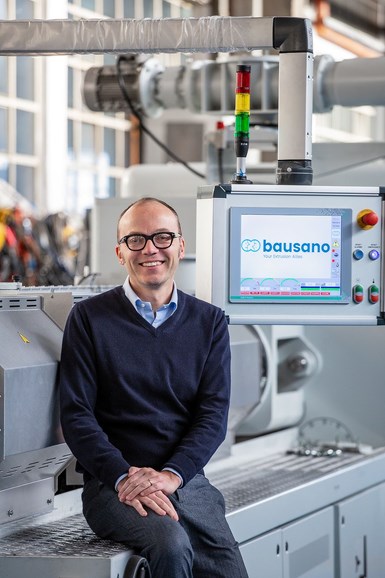Extruder Controls Make for More Energy Efficiency
NPE2024: Twin-screw extruders packed with features to optimize energy consumption.
Bausano’s next-generation MD 92 Nextmover twin-screw extruder comes equipped with the Multidrive system and Digital Extruder Control 4.0, both aimed at optimizing energy consumption.
Multidrive is a patented transmission system that enables the distribution of the coupling force over four shaft motors, controlled by a single static frequency converter, for constant rotation and perfect synchronism of the motors.

Bausano’s Digital Extruder Control 4.0 is a screening tool for extruder and end-of-line energy performance. It is an intuitive interface, enabling screw speed to be adjusted, temperature to be controlled and alarm thresholds to be set, even remotely, with a view to vertical integration of control technologies. In addition, the ability to customize multiple configurations and to consult, at any time, the archive of statistics, facilitates predictive and preventive maintenance activities, with positive results in terms of overall equipment effectiveness.
Bausano is also displaying the Smart Energy temperature control system, developed to keep the temperature of the processed material constant and reduce heat loss. The innovative technology applies the principles of electromagnetic induction to the extrusion process for faster and more uniform heating, guaranteeing consistent extrudate quality and efficiency, as high as 95% for net energy savings of 35%.
Related Content
-
Single vs. Twin-Screw Extruders: Why Mixing is Different
There have been many attempts to provide twin-screw-like mixing in singles, but except at very limited outputs none have been adequate. The odds of future success are long due to the inherent differences in the equipment types.
-
How Screw Design Can Boost Output of Single-Screw Extruders
Optimizing screw design for a lower discharge temperature has been shown to significantly increase output rate.
-
Roll Cooling: Understand the Three Heat-Transfer Processes
Designing cooling rolls is complex, tedious and requires a lot of inputs. Getting it wrong may have a dramatic impact on productivity.












